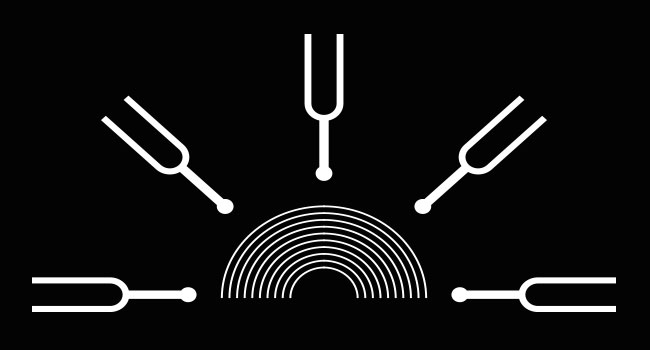What is decentralized finance DeFi?
In addition, yield volatility on certain platforms can potentially lead to rapid devaluation of returns. Advocates believe DeFi can make it easier for more people to access lending, as approval doesn’t rely on many of the strict criteria required by traditional lenders. DeFi lending involves supplying crypto to protocols which, in turn, can be borrowed in exchange for interest. Borrowers must provide collateral in the form of other crypto assets, which are sometimes worth more than the value of the amount they want to borrow.
This person has been scammed before by someone selling a fake ticket; she trusted that the person was selling a real ticket and sent the person money, which the person then stole. This time, she decides to try a Web3-enabled, blockchain-based ticket exchange service. On these https://www.xcritical.in/ sites, every ticket is assigned a unique, immutable, and verifiable identity that is tied to a real person. Before the concertgoer purchases her ticket, the majority of the nodes on the network validate the seller’s credentials, ensuring that the ticket is in fact real.

Stablecoins also play an important role in liquidity pools — an integral part of the DeFi ecosystem. Launched in 2018, Compound Finance is the brainchild of Rober Leshner. The project is a lending protocol developed on the Ethereum blockchain that allows users to gain interest by lending out assets or borrowing against collateral. The Compound protocol makes this possible by creating liquidity for cryptocurrencies through interest rates set using computer algorithms. Most smart contracts offer Turing Complete programming languages that allow multiple parties to interact with each other without a centralized intermediary. Blockchain’s ability to capitalize on smart contracts makes them ideal platforms to choose when building financial applications.
At the moment, users are mostly experienced cryptocurrency traders, not yet the novice investors who have flocked to platforms like Robinhood. People who lent cryptocurrency on Compound would earn $COMP for their efforts—kind of like loyalty points. They could use these governance tokens to vote on proposals to upgrade the network. Ethereum, the platform inspired by Bitcoin, and the one on which a majority of DeFi services run, was developed by programmer-turned-entrepreneur Vitalik Buterin. In 2013, at the age of 19, the Russian-Canadian wrote a white paper outlining an alternative platform to Bitcoin that would enable programmers to develop their own apps using a built-in programming language. Thus, Ethereum was born, and over the past nine years, it has grown exponentially.
However, like any exchange, they do require liquidity to be able to match buyers and sellers. The obvious benefit of smart contracts is that they can be created for you to borrow and lend your cryptocurrency without the use of an intermediary, which sidesteps a lot of the risks involved in traditional lending. If, for example, a borrower can’t meet their obligations in a loan, their lender can simply take their funds back, making the need for collateral unnecessary.
Advocates think it can provide an open, transparent, and efficient alternative to the established financial system. Anyone with a smartphone or computer can take part, no matter where they’re located. There are no third-party entities that decide who can or can’t participate. Derivatives allow users to interact with assets without buying them, although, in some cases, the user has the option to buy the underlying asset. Lock derivatives are contracts where traders are bound to agreed-upon terms throughout the contract’s life, whereas option derivatives let holders buy or sell the underlying asset before expiration.
Nor is there necessarily someone to repay investors when hackers find a vulnerability in the smart contracts or other aspects of a DeFi service. The primary protection against unexpected losses is the warning “investor beware,” which has never proved sufficient in finance. Others think that should the “bubble” pop, the DeFi space will continue to grow, albeit the profits from things like yield farming will be smaller. The exigent problem is that those trading such US dollar stablecoins must trust that the companies that create them are true to their word and that these tokens are always redeemable for US dollars. Lawrence Lessig’s dictum, “Code is Law”, motivated the rise of the decentralized stablecoin, whose peg to the asset it represents is determined by a complex, self-sustaining algorithm. The DeFi movement refers to a specific genre of financial product that champions decentralization above all else, and uses lucrative incentive mechanisms to encourage investors to play along.
YFi token holders have full control over Yearn Finance’s governance system, and can propose and vote on changes to the protocol via on-chain votes. They are often used to send real-world data to the blockchain but can also send data from the blockchain to the real world. In most cases, software oracles that connect to public APIs are used. In some cases, hardware oracles with physical sensors are used to determine things like wind speed. Blockchain and cryptocurrency are the core technologies that enable decentralised finance.
Because DeFi is an emerging industry, you run the risk of investing in a project that could fail. Plus, the cryptocurrency markets are highly volatile and complex, making it difficult to gauge both the market and industry. In addition, technology glitches, high energy consumption, hardware malfunctions, and even system maintenance and upgrades all contribute open Finance vs decentralized finance to DeFi’s risk factors. Comparing this to today’s financial system, even the most efficient, price-competitive, and secure banking processes can’t offer these benefits at the level that a blockchain network can—or so say blockchain proponents. When we say blockchain is decentralized, that means there is no middleman or gatekeeper managing the system.
As such, any recommendations or statements do not take into account the financial circumstances, investment objectives, tax implications, or any specific requirements of readers. The rising popularity of DeFi and other cryptocurrency make it seem like an attractive investment. But it’s important to understand what you’re getting into before taking the plunge, and understand the benefits and drawbacks. Coding errors and hacks are common in DeFi.[4][1] Blockchain transactions are irreversible, which means that an incorrect or fraudulent DeFi transaction cannot be corrected easily.

Furthermore, unlike traditional finance, DeFi platforms do not offer insurance—users potentially risk losing their investments in the event of a hack or a smart-contract failure. Additional drawbacks, according to skeptics, include regulatory concerns and scalability limitations. DeFi advocates have ambitious goals—many of them wish to rewire traditional financial systems like banking and credit card payments. They believe blockchain technology can help replace most, if not all, of the predominant parts of the financial establishment.
DeFi supporters envision a future where smart contracts can automate payroll, accounts receivable, and royalty payments to ensure accuracy and timeliness. They believe this will also help cut down on the administrative costs required to manage these items. In the scenario proposed by most proponents of DeFi, instead of using your card, you would use some form of cryptocurrency and circumvent the fees demanded by the credit card company and the bank. However, DeFi would extend to much more than just paying for online goods and services; it aims to take banks out of the equation entirely. DeFi derivatives may lead to regulatory issues down the line for exchanges that haven’t properly registered with the SEC. The SEC has sent numerous subpoenas to cryptocurrency projects selling tokens that resemble investment contracts.
- Here’s a theoretical example to help illustrate how a Web3 transaction might work.
- They run on smart contracts, which supporters believe can make trading more trustworthy and allow participants to stay anonymous.
- Borrowing money from decentralized providers comes in two main varieties.
- In even some of the largest DeFi protocols, close readings of their smart contracts reveal that teams hold immense power or the contracts are vulnerable to manipulation.
You still have to have a debit card or bank account linked to those apps to send funds, so these peer-to-peer payments are still reliant on centralised financial middlemen to work. “In DeFi anyone can launch their own project, token, contract — that is why you should be aware of scams and low quality projects,” notes Mozgovoy. Aside from being aware of scams, in practicality, Mozgovoy states that with DeFi users can save, lend, or take part in derivatives and exchanges. But because it’s still largely unregulated, investors generally don’t have the same protections they do in traditional financial markets. In spite of the risks, the possibilities enabled by DeFi make it a very exciting space for crypto investors.






